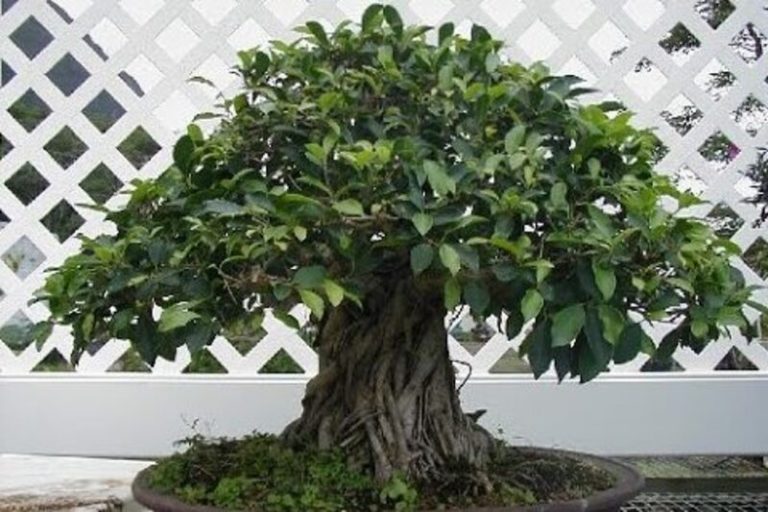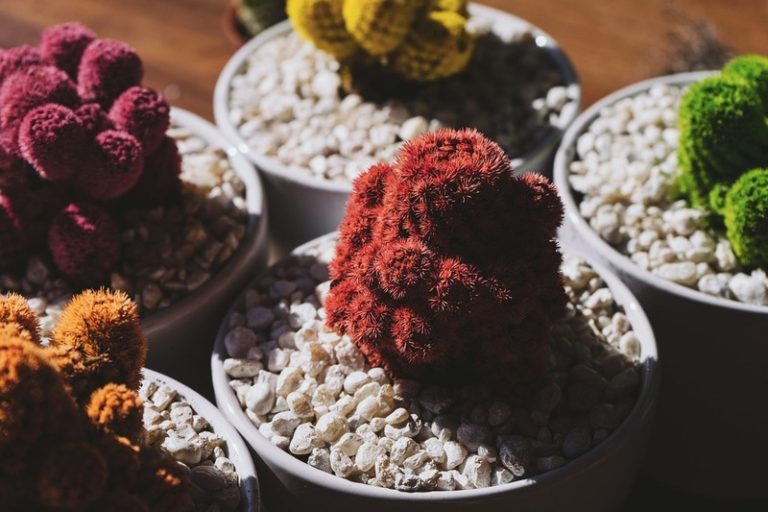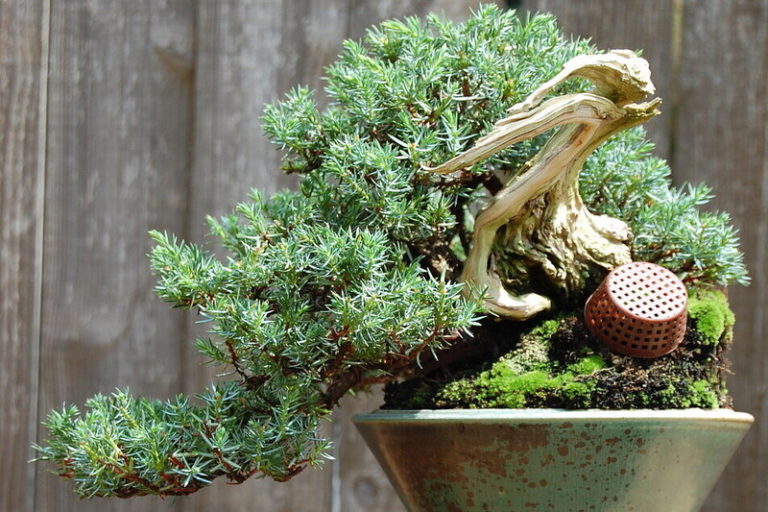Desmodium Bonsai: An Exotic Addition to Your Bonsai Collection
Desmodium bonsai are small trees that are often grown for their beauty and good health. It is also known as tick-trefoil. It is a plant from Asia and Africa that is in the legume family.
What is Desmodium Bonsai?
Desmodium bonsai is a small tree that is often grown as a bonsai plant for its beauty and health benefits. It has small leaves and tiny purple flowers and requires specific environmental conditions, regular care, and maintenance. Growing Desmodium bonsai has many advantages, such as its aesthetic appeal, health benefits, and eco-friendliness.
History and Origins of the Desmodium Bonsai
Desmodium bonsai belongs to the Desmodium genus, which consists of about 300 species of flowering plants. The genus is native to Asia, Africa, and the Americas, and many species are used in traditional medicine for various ailments.
Although the precise history of Desmodium bonsai is unknown, it is said to have originated in Southeast Asia, where bonsai gardening has been popular for millennia. Bonsai is the discipline of cultivating and training miniature trees to resemble full-sized trees in nature.
Desmodium bonsai was likely created by bonsai devotees who selected and nurtured the species due to its diminutive size, distinctive foliage, and ability to thrive in container culture. Today, Desmodium bonsai is a popular option among bonsai devotees worldwide and can be found in numerous nurseries and bonsai businesses.
Types of Desmodium Bonsai
There are several types of Desmodium bonsai, each with its own unique characteristics and features. Some popular types of Desmodium bonsai include:
Desmodium gyrans: This type of Desmodium bonsai is also known as the telegraph plant due to the movement of its leaves. The leaves of Desmodium gyrans move in response to changes in light and temperature.
Desmodium triflorum: This type of Desmodium bonsai is native to North America and is also known as the three-flowered tick-trefoil. It has small green leaves and produces small pink or purple flowers in the summer.
Desmodium styracifolium: This type of Desmodium bonsai is native to China and produces small white flowers in the summer. It has small, delicate leaves and a slow-growing habit.
Desmodium elegans: This type of Desmodium bonsai is native to Southeast Asia, has small, oval-shaped leaves, and produces small purple flowers in the summer.
Desmodium caudatum: This type of Desmodium bonsai is also known as the trailing tick-trefoil due to its trailing growth habit. It has small green leaves and produces small pink or white flowers in the summer.
Each type of Desmodium bonsai has its own unique characteristics and growing requirements. It is important to research and understand the specific needs of each type of Desmodium bonsai to ensure its proper care and maintenance.
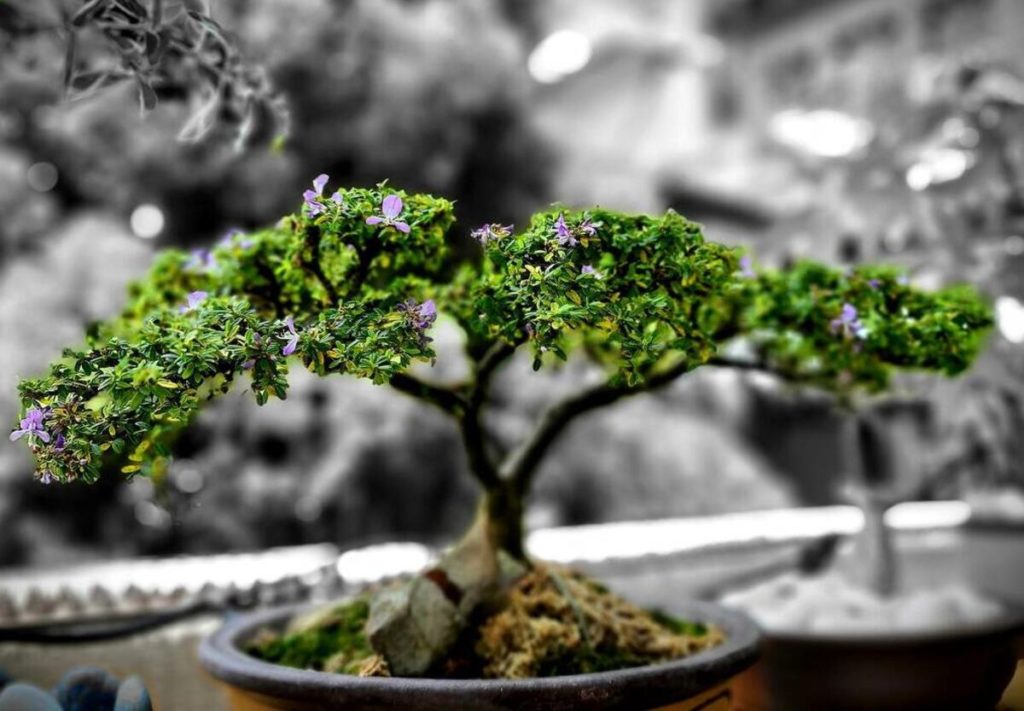
Desmodium Bonsai and its Symbolism
Desmodium bonsai has rich symbolism and cultural significance in many parts of the world. In traditional Chinese culture, bonsai trees, including Desmodium bonsai, are considered to be symbols of harmony, balance, and longevity.
Bonsai is a method of meditation and introspection in Japanese culture. Desmodium bonsai is frequently connected in Japanese culture with the notion of wabi-sabi, which emphasizes the beauty of imperfection and transience.
In addition to its cultural significance, Desmodium bonsai also has a symbolic meaning in the language of flowers. In the language of flowers, Desmodium bonsai represents good luck, resilience, and endurance.
Desmodium bonsai is sometimes presented as a gift for important events such as weddings, birthdays, and housewarming celebrations because to its symbolic and cultural value. It is a thoughtful and meaningful present that may enhance the beauty, harmony, and good fortune of any house or environment.
Characteristics of the Desmodium Bonsai
Desmodium bonsai is a little tree with distinctive qualities that make it a popular option among bonsai aficionados. Desmodium bonsai has the following characteristics:
- Small size: Desmodium bonsai is a little tree that may reach a height of 24 inches, making it an excellent choice for both indoor and outdoor bonsai care.
- Small leaves: Desmodium bonsai has small, delicate leaves that add to its unique and charming appearance. The leaves are typically green in color, but some species may have purple or variegated foliage.
- Flowers: Desmodium bonsai produces small, colorful flowers in the summer. The flowers can be pink, purple, or white, depending on the species.
- Slow-growing: It takes time and attention to cultivate a Desmodium bonsai into a beautiful bonsai tree.
- Hardy: Desmodium bonsai is a tough plant that may thrive in a variety of environments. It does, however, prefer moderate to bright light, well-draining soil, and consistent watering.
- Health benefits: Desmodium bonsai is said to provide a variety of health advantages, including improved air quality, reduced tension and anxiety, and promoted relaxation.
Overall, Desmodium bonsai is a unique and appealing tree that may provide beauty, tranquillity, and health advantages to any environment. It may be a long-lasting and satisfying addition to any bonsai collection if cared for and maintained properly.
How to Grow Desmodium Bonsai
Growing a healthy and beautiful Desmodium bonsai requires patience, attention, and a few basic steps. Here are some tips on how to grow Desmodium bonsai:
Choosing the right pot and soil: Desmodium bonsai thrives in a well-draining container with a soil mix created particularly for bonsai culture. To avoid waterlogging, make sure the pot has drainage holes.
Positioning and light: Place your Desmodium bonsai in a location with moderate to bright light. Avoid direct sunlight, as it can scorch the leaves. Rotate the pot regularly to ensure all sides of the tree receive adequate light.
Watering: Regularly water your Desmodium bonsai, keeping the soil moist but not soaked. Check the soil often to ensure that it is neither too arid nor too moist. In general, going underwater is preferable to going overwater.
Fertilizing: Desmodium bonsai requires regular fertilization to support its growth. Use a balanced liquid fertilizer designed for bonsai cultivation and apply it according to the manufacturer’s instructions.
Pruning and shaping: Regular pruning and shaping are essential for maintaining the desired shape and size of your Desmodium bonsai. Use sharp bonsai scissors to prune the branches and leaves, and wire the branches to shape them as desired.
Repotting: Repot your Desmodium bonsai every two to three years to refresh the soil and encourage new growth. Repotting is best done in the early spring, when the tree is actively growing.
You can successfully cultivate and maintain a healthy and beautiful Desmodium bonsai that will bring beauty, tranquility, and pleasure to your home or garden by following these simple steps.
Benefits of the Desmodium Bonsai
Not only is Desmodium bonsai a gorgeous and distinctive tree, but it also offers a number of benefits that make it an excellent addition to any home or garden. The following are several advantages of Desmodium bonsai:
- Air purifying: It is believed that Desmodium bonsai has air-purifying properties and can enhance the air quality in your home or office. It absorbs airborne pollutants and contaminants, including formaldehyde, benzene, and ammonia.
- Stress relief: Studies indicate that being surrounded by plants and environment can reduce tension and anxiety. Desmodium bonsai can provide a tranquil environment that promotes mental health and relaxation.
- Aesthetic appeal: Desmodium bonsai is a visually appealing and unique tree that can add beauty and charm to any space. Its delicate leaves and colorful flowers make it a great decorative piece.
- Mindfulness and patience: Growing and maintaining a Desmodium bonsai requires patience, attention, and care. This process can teach you mindfulness and patience, which can be beneficial for your mental health and well-being.
- Symbolism: Desmodium bonsai has rich symbolism and cultural significance in many parts of the world. It is considered a symbol of harmony, balance, and longevity and can be a thoughtful and meaningful gift for special occasions.
Desmodium bonsai is an aesthetically pleasing, physically healthy, and mentally stimulating tree. It is a wonderful asset to any home or garden and can bring happiness and tranquility into your life.
Styling and Design of the Desmodium Bonsai
The styling and design of Desmodium bonsai can vary depending on the species, age, and personal preference. However, here are some common techniques and styles used to style and design Desmodium bonsai:
Formal upright style: This style is characterized by a straight, upright trunk and evenly spaced branches that gradually taper towards the top. It creates a formal and symmetrical look and is suitable for more mature Desmodium bonsai.
Informal upright style: This style is characterized by a slightly curved or twisted trunk and irregularly spaced branches. It creates a natural and relaxed look and is suitable for younger Desmodium bonsai.
Cascade style: This style is characterized by a cascading trunk and branches that flow downward. It creates a dynamic and dramatic look and is suitable for taller Desmodium bonsai.
Semi-cascade style: This style is similar to the cascade style but with a less pronounced cascading effect. It creates a more balanced and subtle look and is suitable for medium-sized Desmodium bonsai.
Broom style: This style is characterized by a straight trunk with branches that radiate outward in a horizontal pattern. It creates a compact and dense look and is suitable for younger Desmodium bonsai.
When designing and styling your Desmodium bonsai, consider the natural growth patterns and characteristics of the species and aim to create a balanced and harmonious look. Use pruning, wiring, and shaping techniques to create the desired shape and size of your bonsai tree. With time and care, your Desmodium bonsai will grow into a unique and beautiful tree that reflects your personal style and preferences.
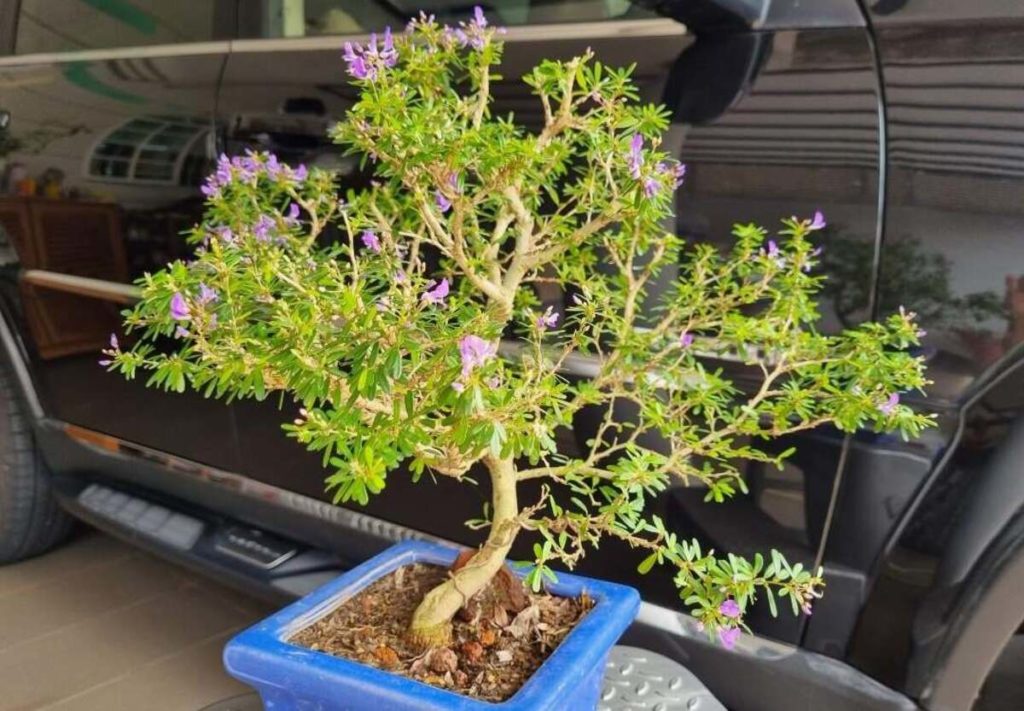
How to Care for and Maintain Desmodium Bonsai
Desmodium bonsai is a low-maintenance, comparatively simple-to-care-for tree. However, it requires fundamental care and maintenance to flourish and remain healthy. Here are some care and maintenance recommendations for your Desmodium bonsai:
- Watering: It is essential not to overwater Desmodium bonsai, which prefers mildly damp soil. Water your bonsai when the soil feels dried to the touch, and ensure that any excess water escapes from the container to prevent waterlogging.
- Soil: Use well-draining soil that is rich in nutrients. A mixture of Akadama, pumice, and lava rock is ideal for Desmodium bonsai. Repotting every two to three years is recommended to refresh the soil and promote healthy growth.
- Sunlight: Desmodium bonsai prefers bright, indirect sunlight but can also tolerate some direct sunlight. Avoid placing it in areas with strong, direct sunlight, as it can damage the leaves.
- Temperature and humidity: Desmodium bonsai prefers moderate temperatures between 18 and 27°C (65 and 80°F) and high humidity levels. Mist the leaves regularly or use a humidity tray to maintain the required humidity level.
- Pruning: Regular pruning is essential for maintaining the shape and size of your Desmodium bonsai. Use sharp scissors or pruning shears to remove any dead or yellow leaves, branches, or twigs.
- Fertilization: Desmodium bonsai requires regular fertilization during the growing season to promote healthy growth and flowering. Use a balanced fertilizer every two weeks or as recommended by the manufacturer.
- Pest and disease control: Arachnid parasites and scale insects can cause damage to the leaves and branches. Employ a suitable insecticide or pesticide to eliminate the infestation. Additionally, monitor for fungal infections and administer fungicides as necessary.
By adhering to these straightforward guidelines, you can ensure that your Desmodium bonsai remains healthy and flourishes for many years. Remember to monitor your bonsai routinely and modify it as necessary. Your Desmodium bonsai will reward you with attractive foliage and vibrant flowers if you provide it with the appropriate care and maintenance.
Desmodium Bonsai Care Sheet
| Aspect | Care Tips |
| Watering | Water when soil feels dry. Avoid overwatering and promote good drainage. |
| Soil | Use well-draining soil, and repot every 2-3 years. |
| Sunlight | Prefers bright, indirect sunlight. Avoid strong direct sunlight. |
| Temperature/Humidity | Prefers moderate temperature between 18-27°C (65-80°F) and high humidity levels. Use a humidity tray or mist leaves to maintain required humidity level. |
| Pruning | Regular pruning is essential to maintain shape and size. |
| Fertilization | Regular fertilization during the growing season with a balanced fertilizer. |
| Pest and Disease control | Monitor for pests and diseases and use suitable insecticide or fungicide as needed. |
Remember to regularly monitor your Desmodium bonsai and adjust your care routine as needed. With proper care and maintenance, your Desmodium bonsai will thrive and reward you with beautiful foliage and vibrant flowers.
Conclusion
Desmodium bonsai is a beautiful and beneficial plant that can be grown both indoors and outdoors. With the right care and attention, it can bring many benefits to both your health and the environment. Consider growing a Desmodium bonsai today and enjoying the beauty and benefits it brings.
FAQ:
Q: What is Desmodium Bonsai?
A: Desmodium Bonsai is a miniature representation of the Desmodium plant, which is a legume. It is cultivated as a bonsai tree and is renowned for its attractive foliage and tiny pink blossoms.
Q: How big do Desmodium Bonsai trees grow?
A:The average height of a Desmodium bonsai tree is 30–40 cm (12–16 inches), however this can be manipulated by the bonsai artist to be higher or shorter.
Q: What kind of soil does Desmodium Bonsai prefer?
A: Desmodium Bonsai prefers well-draining soil that is rich in nutrients. A mixture of Akadama, pumice, and lava rock is ideal for Desmodium Bonsai.
Q: How often should I water my Desmodium Bonsai?
A: Water your Desmodium Bonsai when the soil feels dry to the touch. Avoid overwatering, as it can lead to root rot. Make sure the excess water drains out of the pot.
Q: Can Desmodium Bonsai tolerate direct sunlight?
A: Desmodium Bonsai prefers bright, indirect sunlight, but it can also tolerate some direct sunlight. Avoid placing it in areas with strong, direct sunlight, as it can damage the leaves.
Q: How often should I fertilize my Desmodium Bonsai?
A: Desmodium Bonsai requires regular fertilization during the growing season to promote healthy growth and flowering. Use a balanced fertilizer every two weeks or as recommended by the manufacturer.
Q: How do I prune my Desmodium Bonsai?
A: Regular pruning is essential for maintaining the shape and size of your Desmodium Bonsai. Use sharp scissors or pruning shears to remove any dead or yellow leaves, branches, or twigs.
Q: What pests and diseases should I watch out for with Desmodium Bonsai?
A: Pests such as spider mites and scale insects can cause harm to the leaves and branches. To manage the infestation, use an appropriate insecticide or pesticide. In addition, keep an eye out for fungal diseases and apply fungicides as needed.
Also Read:




